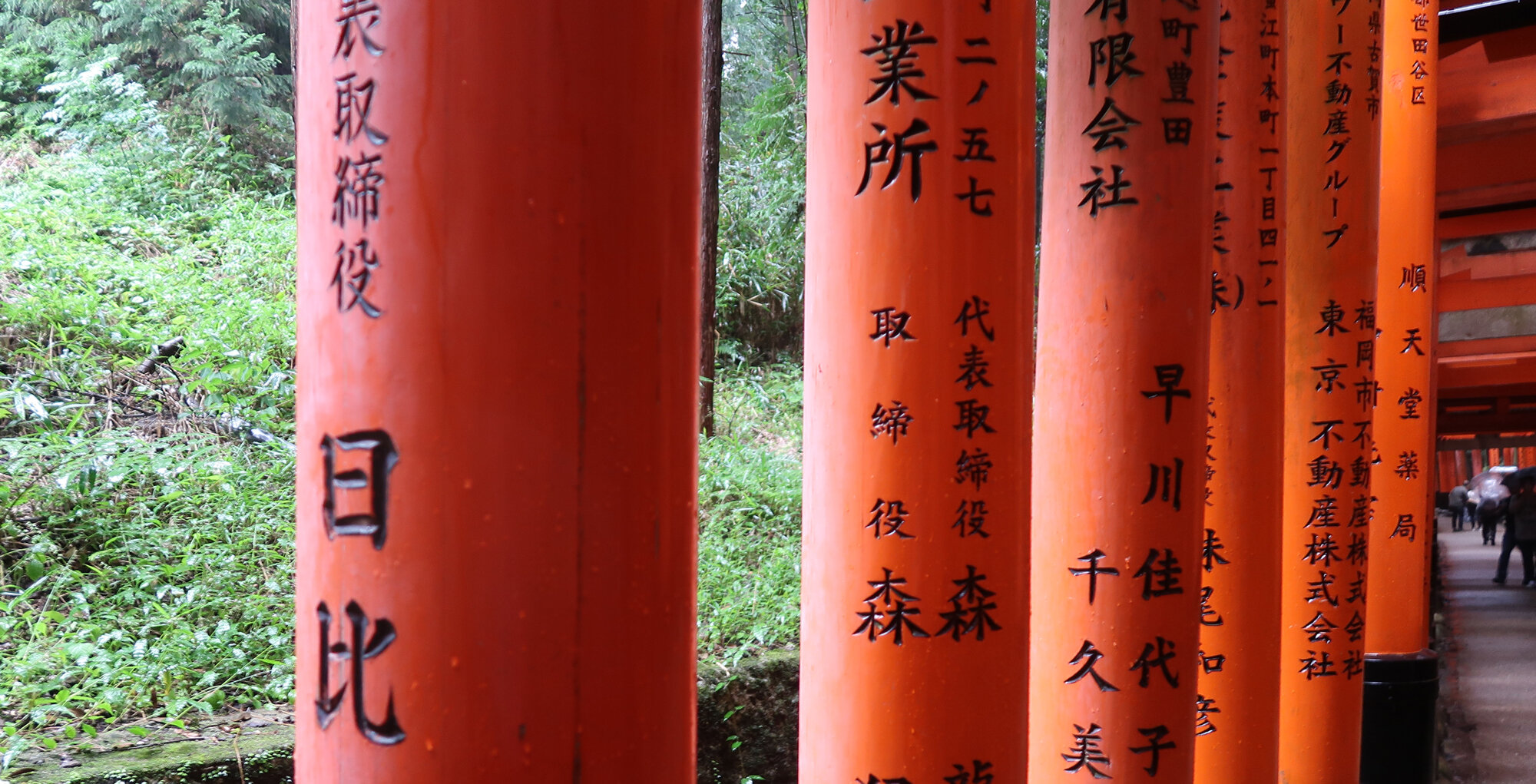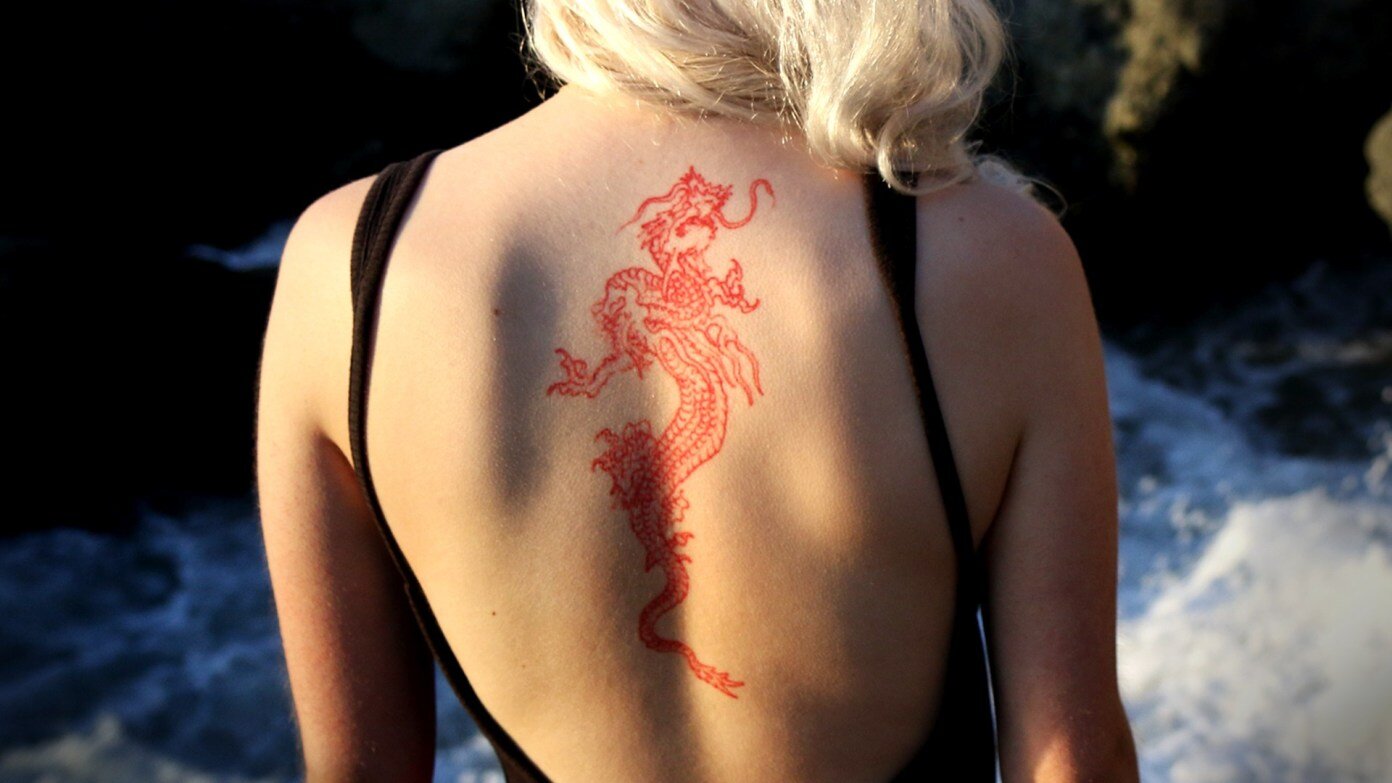Visiting Fushimi Inari-taisha: The Most Magical Place in Kyoto
During my week in Japan I saw many awe-inspiring temples and countless breathtaking sights. Among those, there is one place that I can say with certainty was the most beautiful place that I visited on this trip: Fushimi Inari-taisha.
I’m going to share with you why this place stole my heart and why you should definitely visit it too if you have the opportunity.
Table of Contents Show

Morning in Kyoto
On our exploration of the surrounding area the night before, we had noticed an enticing looking bakery right next door to our hotel: Shinshindo. Then and there we had decided it would be our breakfast destination the next morning.
The following morning, we got ourselves prepared for the rainy day ahead and went outside to find the bakery with a long line of people at its door. We later learned that this restaurant was the top recommended “breakfast place” in the area! Determined to sample the mouth-watering baked goods displayed in the window, we put down our name and waited. Luckily for us, a number of people ahead of us decided to move on before their name was called and we were sat at a table in no time.
The bakery was crowded with small tables of people enjoying their meals and chatting over their coffees, decorated in a classic French style bakery theme. Erica ordered a french toast and I got a croque monsieur, a baked ham and cheese sandwich. On the side, we of course indulged in a couple of the baked goods we had seen earlier. We got a sugar-cinnamon twist and a custard bun to share. And no french breakfast would be complete without cafe lattes to pair with our treats. Our bakery experience was delightful (we ended up getting our breakfast there the next day as well).
Getting to the Shrine
With our craving for delicious baked treats satisfied and a morning coffee warm in our bellies, we could finally begin our day’s quest. Today we would be visiting the famed Fushimi Inari-taisha. I previously wouldn’t have known the name off of the top of my head, but anyone would recognize its iconic, endless line of red gates.
First, we made the short walk to Sanjo Station across the bridge. From Sanjo Station, we rode the Keihan line for 10 minutes to the conveniently-named Fushimi-Inari Station. This wasn’t a JR Line so we couldn’t use our Japan Rail Pass, but it only cost about ¥210.
How to use the train stations
How do you use train stations in Kyoto? There are ticket machines outside of all the station entries in Japan with maps of all the connecting stations, each station labeled with the cost to get there – simply insert the amount of money for the station you want to go to and you’ll get your ticket. This map pricing system was confusing to us at first, but you’ll quickly get the hang of it. It didn’t connect directly to Sanjo Station, but one could also use the JR Nara line to Inari Station to get here as well using their JR Pass!
Fushimi Inari Shrine
Directly outside of the station across the street was our destination: the Fushimi Inari Shrine. The giant red-orange gate at its entrance made it impossible to miss. Crowds shuffled in and out along a wide pathway beyond the gate, leading to a temple beyond. A sign along the walk proudly boasted Fushimi Inari as a top TripAdvisor destination.
The temple had large bells for visitors to ring, seemingly as a part of their prayers. The rain had been a light sprinkle on and off all morning, but now it began to come down steadier. Streams of water poured down from the corners of the temple roof, hitting the people below. Good thing we had brought our umbrellas! The rain was cold and the addition of umbrellas added to the crowds, but it was a powerful addition to the solemn beauty of the shrine.
Oh by the way, admission is free!
Things to Know
It’s crowded.
Be warned: this is one of the most popular sights in Kyoto, for good reason, so there will be a lot of people. It was chaotic. It was nearly impossible to get a picture with the looming red gate in front or of the shrines at the entrance. On the trail, we shuffled our way along the path in a single file line behind the crowd of people before us. Beside us within the small space dictated by the red-orange gates we moved through, a similarly tightly knit line moved in the reverse direction.
But fret not! We found to our delight that many of the other visitors didn’t make the full hike, dwindling off the further we trekked from the starting point. Later into the hike, we had entire stretches of the red gate-lined path to ourselves.
They’re called torii.
The thousands of red-orange gates which the shrine is famous for are actually called torii. Who knew? These torii gates line the trails beyond the main buildings which lead all the way up the sacred Mount Inari. For some reason, Erica and I both had imagined these gates only covering a small portion of this trail, but they cover the entire thing! There really are thousands of them, this is not an exaggeration. These torii gates are donated by individuals or companys as offerings to the shrine. Down the backs of the gates’ brightly colored pillars, the names of the donators are carved. “The cost starts around 400,000 yen for a small sized gate and increases to over one million yen for a large gate” (JapanGuide).
What’s with the foxes?
All over the shrine and throughout the hike there are innumerable stone fox statues to be found. Besides being cute, these foxes play an important role in the Shinto beliefs. The Fushimi Inari Shrine is dedicated to the Inari god, whose messengers were thought to be foxes. These foxes carry messages and prayers to the god Inari. Thus, the many fox statues holding scrolls in their mouths around the shrine now make perfect sense.
Be respectful.
This may seem obvious, but at times I had to remind myself this is still a practicing shrine. In many instances we’re accustomed to thinking of beautiful, historical places as being something of the past – but this shrine remains an important part of the present for many. The Fushimi Inari Shrine is an important Shinto shrine dedicated to Inari, the Shinto god of rice. During our visit to the shrine, there were many people who prayed at the various shrines along the hike and left tokens. But it is also very historical. According to JapanGuide, the shrine predates the capital’s move to Kyoto in 794.
It’s a hike.
This was one point that had somehow been totally lost on me during my research of the destination before the trip. We just kept walking through the seemingly endless lines of vermillion-colored torii gates, on and on deeper into the forest. It just kept going. Partway up the mountain when we saw a map of the path we walked, it all made sense. This was a long hike we had gotten ourselves into. Up a literal mountain. Luckily, we had had a hearty breakfast and the utter beauty of the shrine made it well worth the trek.
The Hike Up Mt. Inari
Time: 2-3 hours roundtrip
Distance: about 5km
Height of Mt. Inari: 233 meters
Cost: Free
The further into the forest along the path of red gates we followed, the fewer people we crossed paths with. Deep into the trail we were seemingly alone for entire stretches at a time. Mist blanketed the forest around us as the rain dispersed, in some places growing thick, adding to the solemn beauty of the place. In the distance crows cawed in a melancholy symphony. I was overcome by a feeling of wonder – this place felt magical. Despite the cold rain that had soaked through my clothing and my shoes, I felt both awed and peaceful.
Oftentimes, beautiful monuments and sites are merely a singular object which you wait in line to see and hardly get a chance to soak in before being pushing along by those waiting behind you. Like the Horseshoe Bend in Arizona. Here, for once, you got to truly and fully appreciate the magic of the place. You could stop and listen to the rain patter on the torri, with crows cawing softly in the distance. There isn’t a time limit set by the crowds around you (after you get deeper into the hike, that is).
Leaving the Shrine
We were sweaty, we were tired, and we were beyond hungry. We had most certainly earned our dinner that night. For those fellow step-counting electronic users out there (I have a FitBit) – I had over 25,000 steps that day! But I would do it again in a heartbeat. Fushimi Inari-taisha blew my expectations out of the water and far exceeded them. The memory of this magical hike through endless red gates will stick with me forever. If you have the opportunity, definitely visit the Fushimi Inari Shrine. You won’t regret it.
Souvenir Shopping
Back near the entrance of the shrine, we decided to browse some of the souvenir shops for some token to commemorate this wonderful experience. I picked up a tiny ceramic fox cellphone charm for my camera bag, which now wears several cellphone charms from my travels. We wandered outside of the shrine and down some of the surrounding streets of the town. It was tightly packed with little shops, mostly more souvenir shops catered to the nearby famed tourist attraction that we came from. We poked in a few, but the sun was beginning to dip lower in the sky and it was clear they would be closing soon.
Food Stands
Stands of street food lined the road selling dango, squid, and other things we didn’t recognize. The smells were hypnotic and my stomach growled. But we decided to head back to our neighborhood near Sanjo Station for a warm, dry change of clothes from our hotel before hunting for food.
Goodbye, Fushimi Inari-Taisha!
So we bid farewell to this magical place in Japan. I would have been sadder if I had not known then I would certainly be back – I would definitely have to show Peter this place! Until next time.
Helpful Links:
Fushimi Inari Taisha Offical site
Fushimi Inari-taisha on TripAdvisor
Fushimi Inari Shrine on Japan Guide
Are you planning to visit Fushimi Inari-taisha in Kyoto?
Are you planning a visit to Fushimi Inari-taisha? If you’re planning a trip to Japan and the Kyoto area, I highly suggest that you stop by these glorious red gates.
Thanks for stopping by my blog! If you enjoyed the video, please give it a “thumbs up” and subscribe to my YouTube channel so that you don’t miss the rest of the videos from my Japan trip. I would really appreciate it, I spend way too much time on those videos haha. Use the image below to “pin” this post on Pinterest and save it for later or share it using the social icons at the bottom of the post. You can also follow me on Facebook and Instagram for updates.
What is the “most magical” place you’re visited on your travels so far? Tell me in the comments so I can add it to my bucketlist!
Pinterest images































